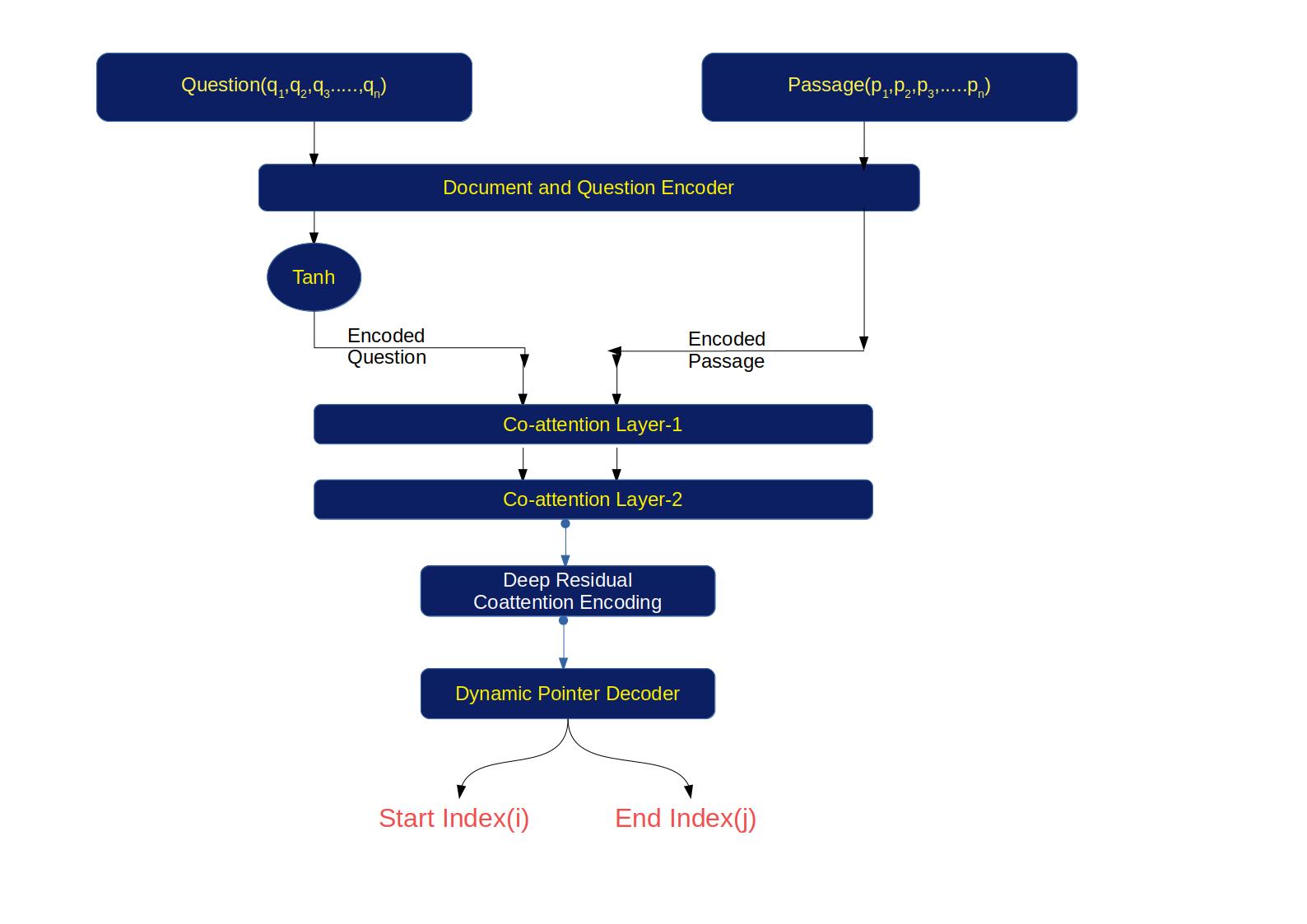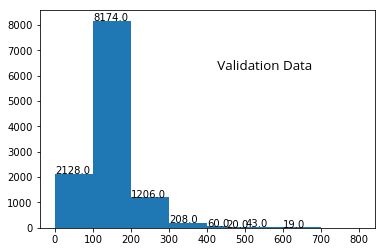Dyanamic Coattention Networks for Question and Answering.
- Python3.5 or above
- PyTorch 0.4.0
- tqdm
- Tensorboard
- Gensim
- DCN+: MIXED OBJECTIVE AND DEEP RESIDUAL COATTENTION FOR QUESTION ANSWERING
- DYNAMIC COATTENTION NETWORKS FOR QUESTION ANSWERING
- Coattention Answer-Pointer Networks for Question Answering
- Short Passages Reading Comprehension and Question Answering
DCN, also known as Dynamic Co-attention Network is an end-to-end neural network for Question Answering. DCN comprises of a Co-attention Encoder and a Dynamic Pointer Decoder. Co-attention Encoder first fuses the question and the passage together to generate a question-oriented passage representation called the coattention encoding which is fed to the Dynamic Pointer Decoder. Dyanamic Pointer Decoder is furthur composed of a Maxout Network and Highway network. The Decoder outputs two values which are the start index and the end index of the answer it has predicted in the passage. An improvement came to the above approach in the form of DCN+. One shortcoming of DCN is that it has only a single-layer coattention encoder. DCN+ is composed of stacked coattention layers which helps the Coattention Encoder build deeper representation of the input. Another improvement that has been made is merging the coattention ouptputs of the current layer with the residual outputs of the previous layer.
Given below is the diagramatic representation of the implemented appraoch:
Processed dataset is the form of dictionary whose key is a unique id present for every question, answer and span triplet. The value corresponding to every key in the dataset dictionary is a list containing passage, question, answer, span, tokenized passage, tokenized question, tokenized_passage and tokenized_question mapped using the word_to_idx dict to a list of numbers.
Given below is the plot of number of examples lying in different length ranges.
-
data_preprocess.py : This file preprocesses the given train and dev json datasets into the desired format. This file asks for three inputs from the command line: - Path to JSON Training file. - Path to JSON Dev file. - Path to the pre-trained Glove Embeddings. After execution, some pickles files like word_to_idx dictionary, embedding matrix, passages, questions, spans, answers etc are generated which are to be stored in a folder named model_pickles in the same directory. So if this folder is not present already, then you should create one. Final generated dataset has only those examples where passage lengths are less than 400. One can change this to any other value by changing the value of the variable max_length_of_passage defined in line 16.
''' Run python data_preprocess.py -h for more information. ''' -
evaluate-v2.0 (1).py : This is the official evaluation script of SQuAD 2.0 but some changes are made from lines 268 to 272 of this script to keep track of only F score and exact match for dev accuracy.
-
help_functions.py : This file contains some of the key functions which are either required to load the dataset in the beginning or when the model is training or validating on the given dataset.
-
model.py : The proposed approach is taken from the four papers mentioned above and this file contains the implementation to it.
-
train.py : This is the training+validating file which is to be executed to the run the program. Some hyperparameters are to be passed either through command line or one can also change them after opening this file in an editor. Lines 25 to 39 defines the hyperparameters of the model. After every epoch, the model is saved in a foled named saved_model and results are stored in a folder named results so you should also create this folder before excuting the code.
''' Run python train.py -h for more information. ''' -
tk.py : This python tkinter program provides the user with a GUI to give a passage and a question as an input and see what the model has produced as its prediction. User can either give an input manually or select a random example from the dataset. Usage: python tk.py Given below is an image of this program

Accuracy and loss for both train as well as dev data are also examined using Tensorboard. One can run a Tensorbaord session to see the performance of the model.


